If you haven’t yet read our first post about our Everest trek, make sure you catch up by reading it here: Everest Basecamp Part I – The Trek Begins!
After a restless night of sleep in Tengboche (elevation 3,860m/12,660ft), we began the walk to another village further up the Khumbu valley called Dingboche. If you haven’t noticed yet, a lot of these towns we trekked through end with “boche”. This simply means “village” in the Sherpa language. This particular walk actually started out going downhill for a change. The only problem was that it had snowed recently and the trails were quite icy. Luckily we had brought micro-spikes (essentially mini crampons) with us from Kathmandu, so we pulled those over our hiking boots and cruised past all the other trekkers who were slowly and gingerly making their way down the icy trails. After a short while we made it down to the valley floor where a bridge spanned the river. As we made our way across the bridge we looked to our right and were blown away by a spectacular view of one of the most beautiful mountains in the Himalayas: Ama Dablam. We must have spent 15 minutes or so next to this bridge just photographing and staring at the mountain.
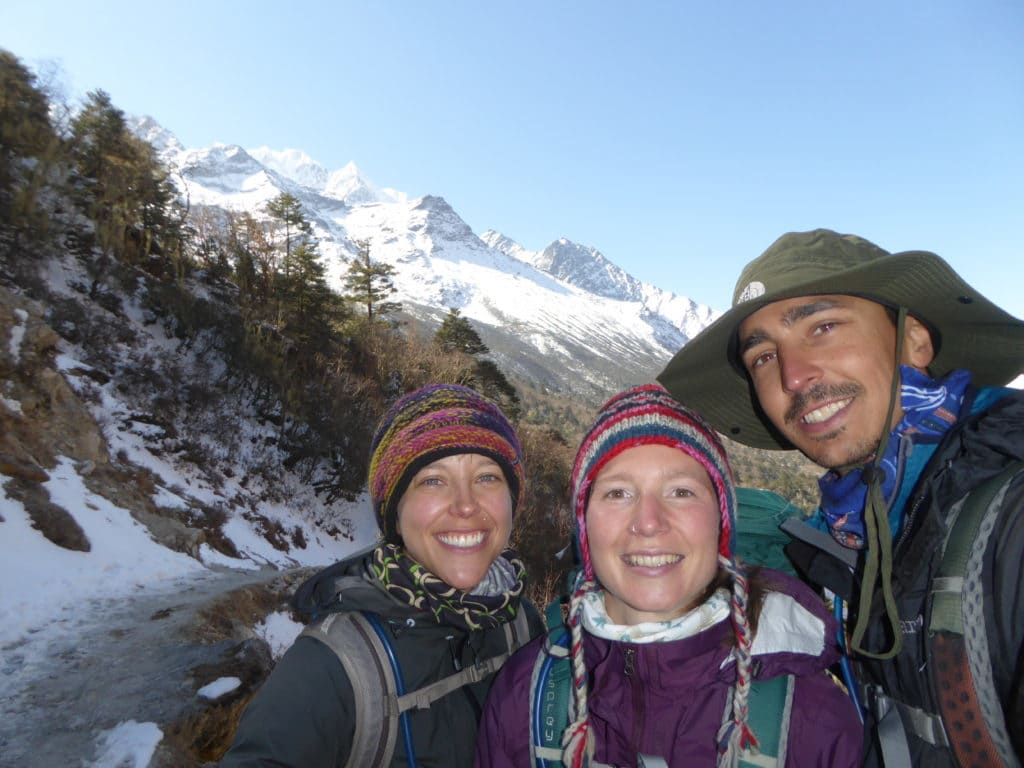
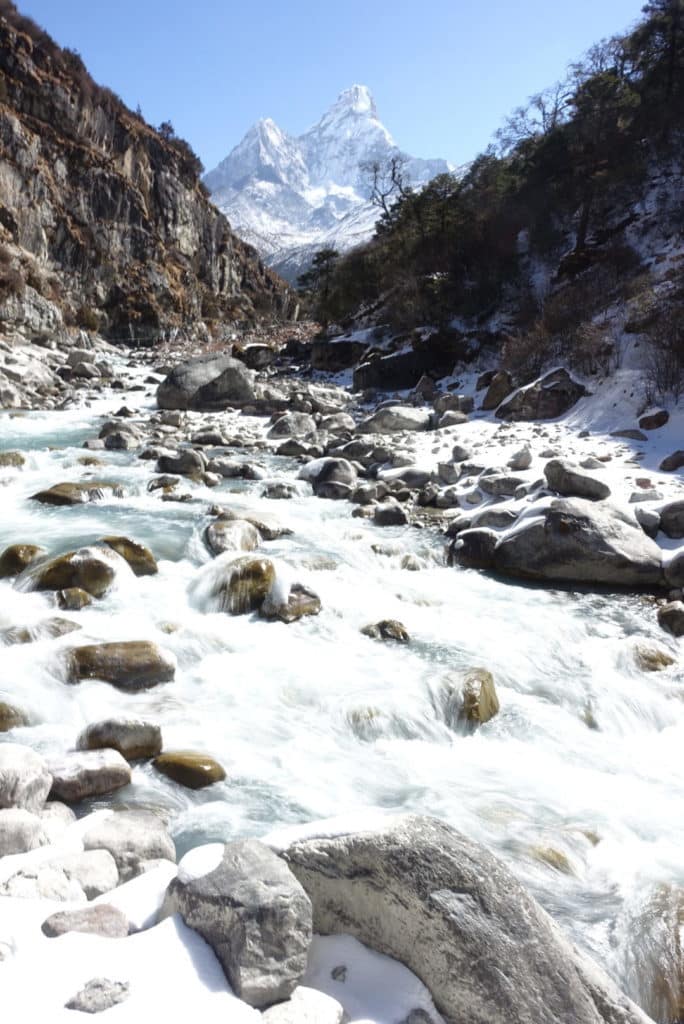
Another thing we began to notice on this particular day of trekking was the significant increase in the number of yaks being used to haul cargo up into the mountains. Before hitting Namche Bazaar we had seen a fair number of donkeys being used to haul loads and around Namche we saw a lot of Jokyos (a yak/cow hybrid) being used. However, we had clearly climbed high enough now to where the smaller framed yak began to outperform its fellow jokyo & donkey counterparts. Being smaller, the yaks aren’t able to carry quite as much but they clearly have the stamina and build (and super bushy tails!) making them perfect for high-altitude work.
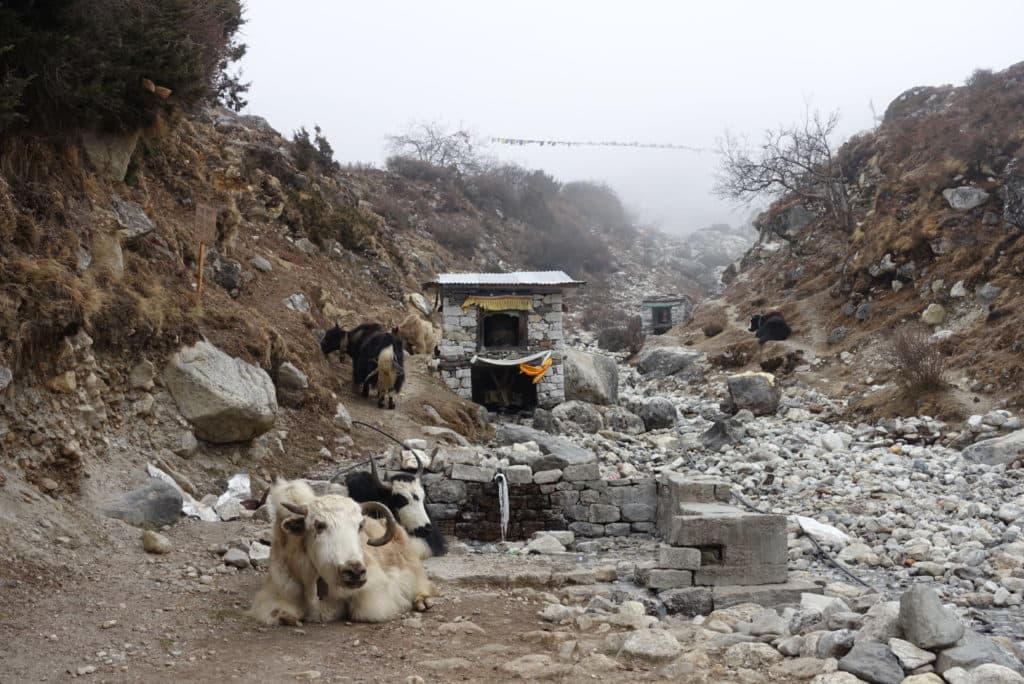
We also began to notice quite a change in the landscape surrounding us as we continued to climb to Dingboche. The beautiful pine forests began to give way to a more scrubby, almost tundra-like type of ground. We also began to see much more brown and gray as this scrub-ground was often dominated by rock and gravel. I wouldn’t say that the scenery was any less beautiful than what we had previously seen, but it was certainly different. As we approached late afternoon, the town of Dingboche finally came into view. Since we had climbed a significant amount in two days (Dingboche sits at 4,300m an altitude increase of 900m/3,000ft from Namche Bazaar), we would spend two days here in this small town to acclimate to this higher altitude.
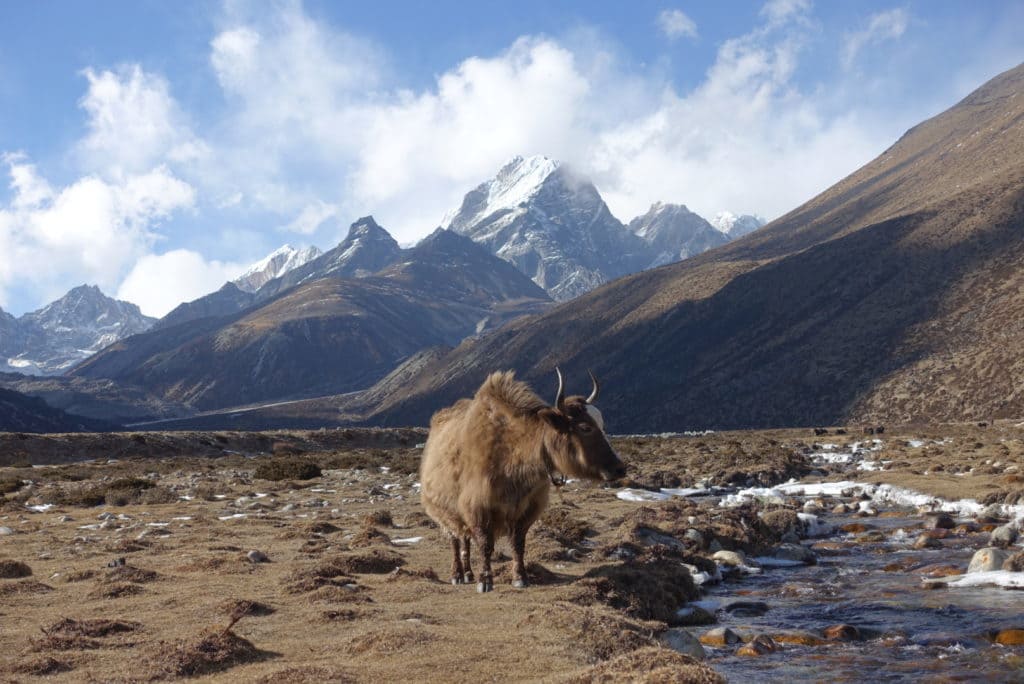
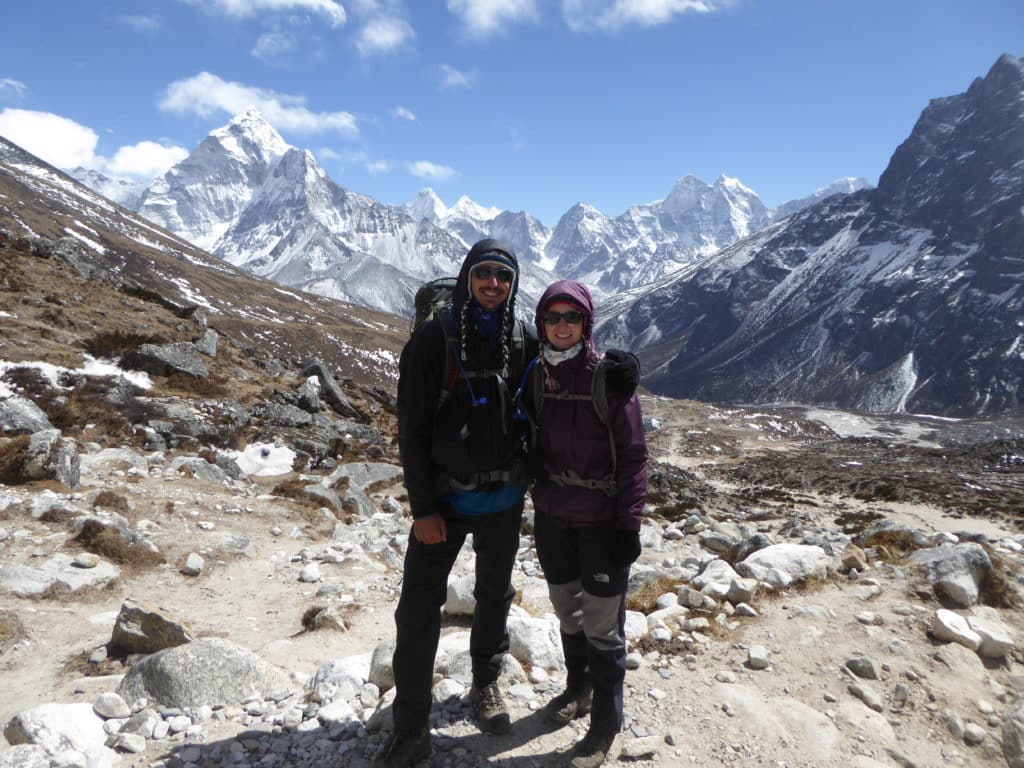
On our “acclimation day” in Dingboche we decided to hike up a local “hill” called Nangkar Tshang. The locals call this a hill because it isn’t higher than 6,000m/19,680ft. However, with a viewpoint at 5,100m/16,720ft, Nangkar Tshang is a mountain in my book! The three of us started out in the morning with our guide to see if we could make it all the way to the top. We were only carrying day packs, but we could tell early on that the climb was going to be tough. We made it to about 4,700m/15,400ft before Karen and Kathy decided to stop. I was still feeling good though, so our guide and I continued up while Karen and Kathy joined a British group on their way back down. The next 400m/1,300ft of vertical climb was one of the toughest, if not the toughest, hikes I’ve ever done. As I neared the top, I could only take about 10 steps before I’d have to stop and catch my breath. It would take me a good 30 seconds each time I stopped before I felt like I could continue. By the time I reached the viewpoint at the top I was exhausted. But wow, these views were worth every calorie I had just burned. I had a 270 degree view of the surrounding mountains and valleys and could see all the way down the Khumbu valley towards Tengboche. I looked down on the clouds as they rolled up the valley (literally, not figuratively!). I was able to see the peaks of Makalu (8,481m/27,838ft – 5th highest in the world), Ama Dablam (6,812m/22,349ft), Kangtega (6,782m/22,251ft), Thamsherku (6,623m/21,680ft), Kongde Ri (6,187m/20,300ft), Taboche (6,542m/21,309ft), and Cholatse (6,440m/21,130ft) as they surround me and the valleys below. All of these mountains are taller than the tallest peaks in North America or Europe. Absolutely breathtaking. Easily the best views of the trip so far.
Here is a video I took from that amazing viewpoint on Nangkar Tschang:
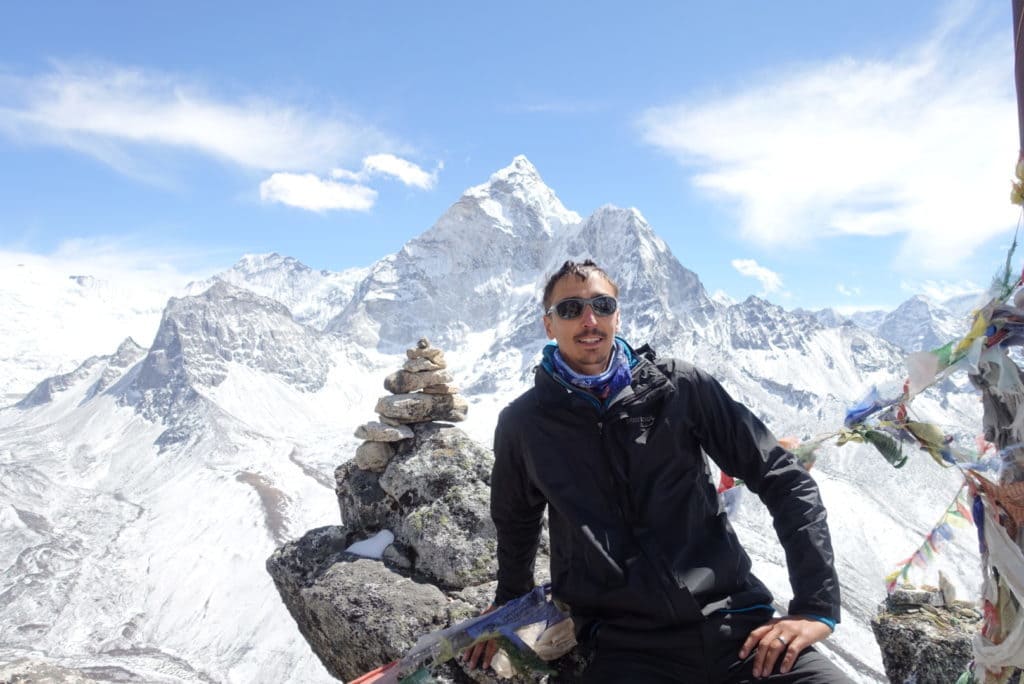
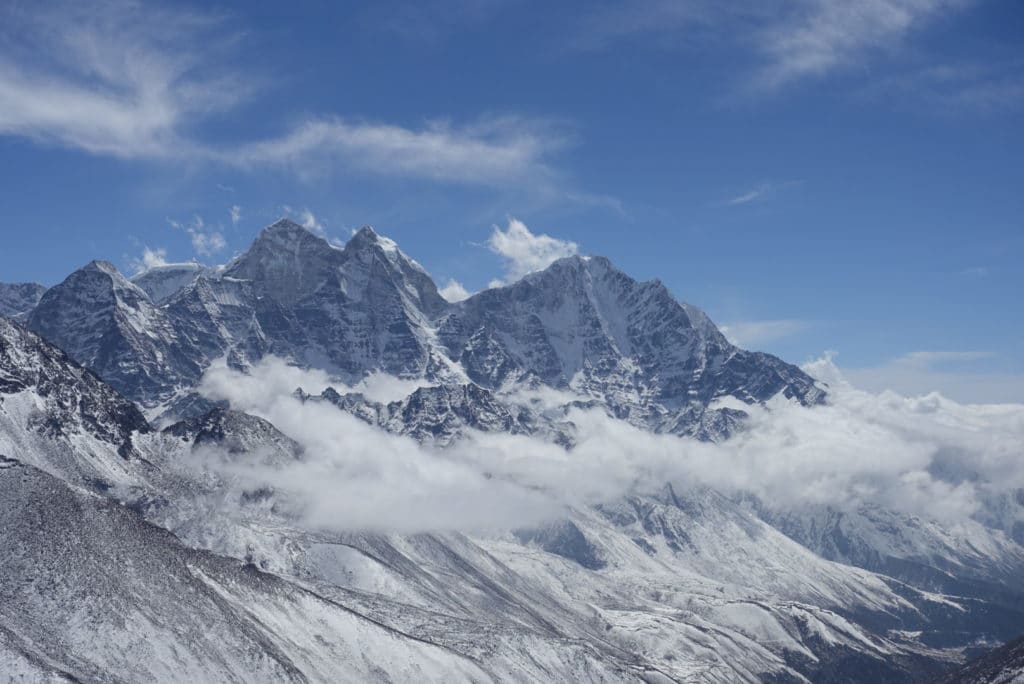
The next day was a rather easy 3 hour walk to a small town called Thukla. Even though it was just a few hours of walking, we decided to stay in the town for the night instead of continuing on to Leboche as most people do. The altitude difference between Dingboche and Leboche is 600m/2,000ft, which is a bit more than what is typically recommended for one day’s change. We therefore decided to play it safe and stay the night at lower elevation in Thukla (4,600m, only 300m higher than Dingboche). We would then continue on to Leboche in the morning.

Upon arriving in Leboche (4,900m/16,70ft), Kathy complained of having a headache. This wasn’t too out of the ordinary though as all of us had also already experienced some headaches along the trek. Headaches are common at high-altitude and are actually an early, but minor, symptom of altitude sickness. However, by the time dinner rolled around Kathy was also complaining of nausea and lack of appetite. These are also symptoms of altitude sickness, and coupled with a headache that wouldn’t go away, we were beginning to get worried. Our guide told us that we should just “wait and see” to see if Kathy would feel better. Since she couldn’t eat and was feeling terrible, Kathy decided to go to sleep. Karen and I put her in bed in our shared room and went back down to eat our dinner (it was still only about 6 p.m.). As Karen and I went upstairs to the room around 8:30 p.m., we found Kathy vomiting into a bucket in the hallway. At this point our worry turned to outright fear. By this point in our trek we were well aware of the dangers of altitude sickness, and seeing Kathy struggle with these symptoms was frightening. We immediately went and got our guide and told him that Kathy was feeling worse than before. He came to see Kathy and pulled out his oxygen monitor (it goes on your finger and measures the level of oxygen in your blood). However, the batteries in his oxygen monitor were dead and he didn’t have any spares. We asked him if Kathy should take Diamox immediately (Diamox is a prevantive and treatment for altitude sickness), but he didn’t know. We asked him if she should take Ibufprofen for the searing migraine she had, and he said he didn’t know if it was safe or not. We also asked if we should descend immediately, even though it was already dark out. He said “its up to you if you want”, instead of making a decision himself on behalf of his clients as an experienced guide (we found out later from other guides that yes, we should have descended that night). It was at this point that we lost faith in our guide. The health of clients should be first priority, yet our guide was incompetent when it came to diagnosing and treating the most common type of sickness encountered at high-altitude or making critical decisions when needed. What was even more baffling is that he had been guiding people in the mountains for over 10 years! How did he not know these things already?! If I wasn’t so worried about Kathy I would have been yelling at our guide for being an imbecile.
Thankfully the owner of the lodge we were staying at was prepared for situations like this. He came with a working oxygen monitor and called a doctor for us. Kathy’s oxygen level was in the 60’s. A reading of 100 is the max, and at sea level a person’s oxygen level should be between 97-100. At the elevation we were at (5,100m/16,700ft) it is common for one’s oxygen level to be in the 80’s (mine was 85 at the time). The doctor on the phone said that a reading in the 60’s wasn’t good, but it wasn’t terrible either. She said that as long as it wasn’t in the 50’s, we could stay the night there and descend to a lower altitude in the morning. The doctor also told us that Kathy should immediately take a dose of Diamox and should most certainly not take Ibuprofen for the headache as it would be too strong at this altitude.
We tried to settle in for the night, but obviously none of us could really sleep. Kathy had a pounding headache and a constant feeling of nausea, while Karen and I were still racked with worry for her well-being. With the condition Kathy was in, Karen and I were too scared to fall asleep so we just read books with the lights on in the room into the early morning hours. I kept checking to see if Kathy’s breathing was normal, and thankfully it was throughout the night. Karen and I eventually fell asleep for a few hours before waking up around 6 a.m. when we all got up and packed our bags. Kathy was still feeling terrible and was unable to eat breakfast.
We began to slowly walk back down to the village of Thukla (which is quite a steep descent on gravelly terrain). Having not eaten for a day, and feeling horrible, it was a slow and unsteady walk down the trail for Kathy. Karen carried her larger pack so she only had to walk with a small daypack. I held onto this daypack the whole way down to make sure she didn’t fall. If it wasn’t bad enough already, the weather on the way down was the worst we experienced so far. It was incredibly windy and cold. So cold that the water in our camelbak tubes froze, preventing us from drinking water from our hydration bladders. We did end up making it down to Thukla, where we stopped for some warm soup. Kathy was able to eat a few spoonfulls. We then continued on for a few more hours to the town of Pheriche (4,100m/13,450ft) which has a clinic run by volunteer doctors. We stopped in to see the doctor to have Kathy’s condition checked. By this point Kathy was already feeling significantly better because of the decrease in altitude (we had descended a total of 1,000m/3,300ft), but we still obviously wanted to get the opinion of a doctor.
The doctor checked Kathy’s oxygen levels (they were at a healthy 85!!) and had her do some cognitive and breathing tests to check for cerebral or pulmonary edema (two types of deadly, advanced stage altitude sickness). Kathy passed these tests brilliantly. After completing the check-up, the doctor let us know that Kathy had gone through a moderate case of altitude sickness and that she would be fine. She advised that we just rest up for a few days, continue treatment of diamox, and resume our trek to Everest base camp if we were so inclined. When the doctor gave us this great news, it felt as if somebody had lifted an Everest-sized boulder off of my chest. The previous 24 hours had probably been the scariest of my life. And for Kathy, she described it as the worst 24 hours of her life. She said she had never felt so physically sick in her entire life.
Karen and I gave Kathy the choice of what to do next. If she wanted to end the trek and head down, then that’s what we would do. Kathy said that she never wanted to experience altitude sickness again, but she also didn’t want to let altitude sickness ruin our trip. She wanted to rest for a few days and then head back up to Everest base camp. She didn’t want to leave Nepal without accomplishing the goal we had set out for. Talk about having an iron will! This woman won’t back down from anything!
So, having decided on what we were going to do, we found a nice lodge in Pheriche and stayed inside for two days straight! We didn’t do anything but read books, drink water, and eat food. The perfect recipe for recuperation for Kathy. It was even called “The Edelweiss Pheriche”! For those unawares, the Edelweiss is the national flower of Austria. Pretty fitting that we found our recuperating Austrian a teahouse named Edelweiss to stay at!
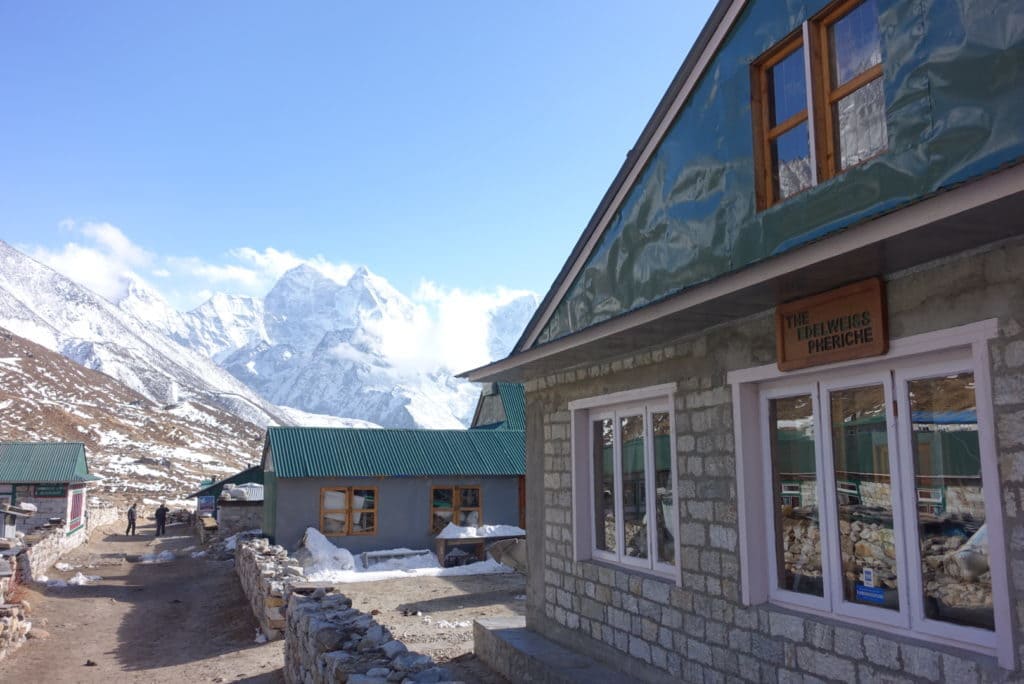
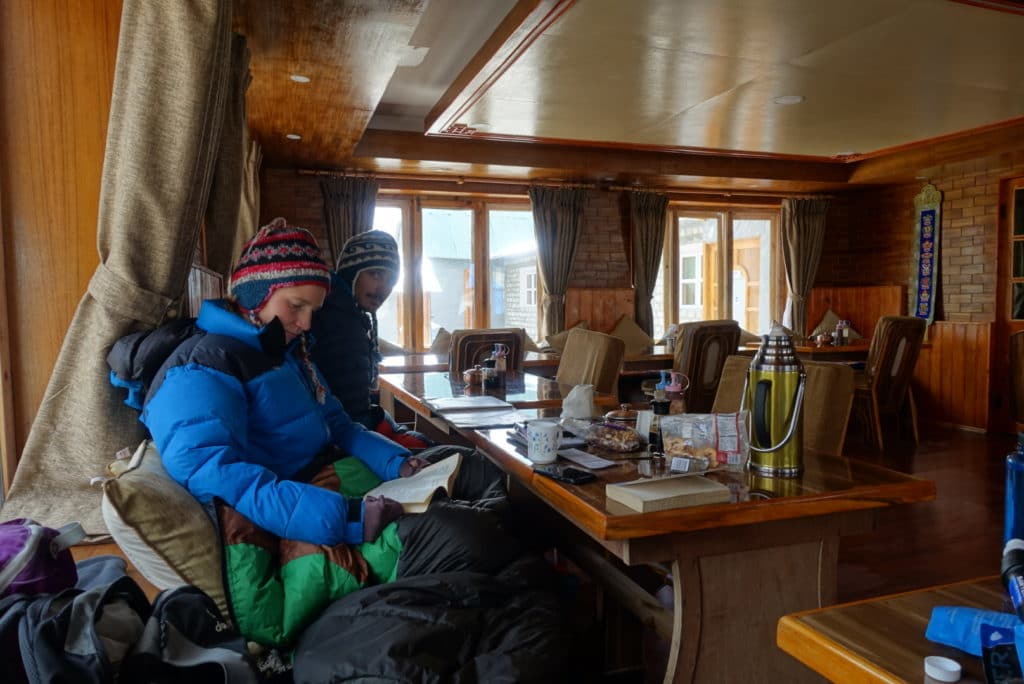
Check back soon to see how the rest of our Everest Basecamp trek went!

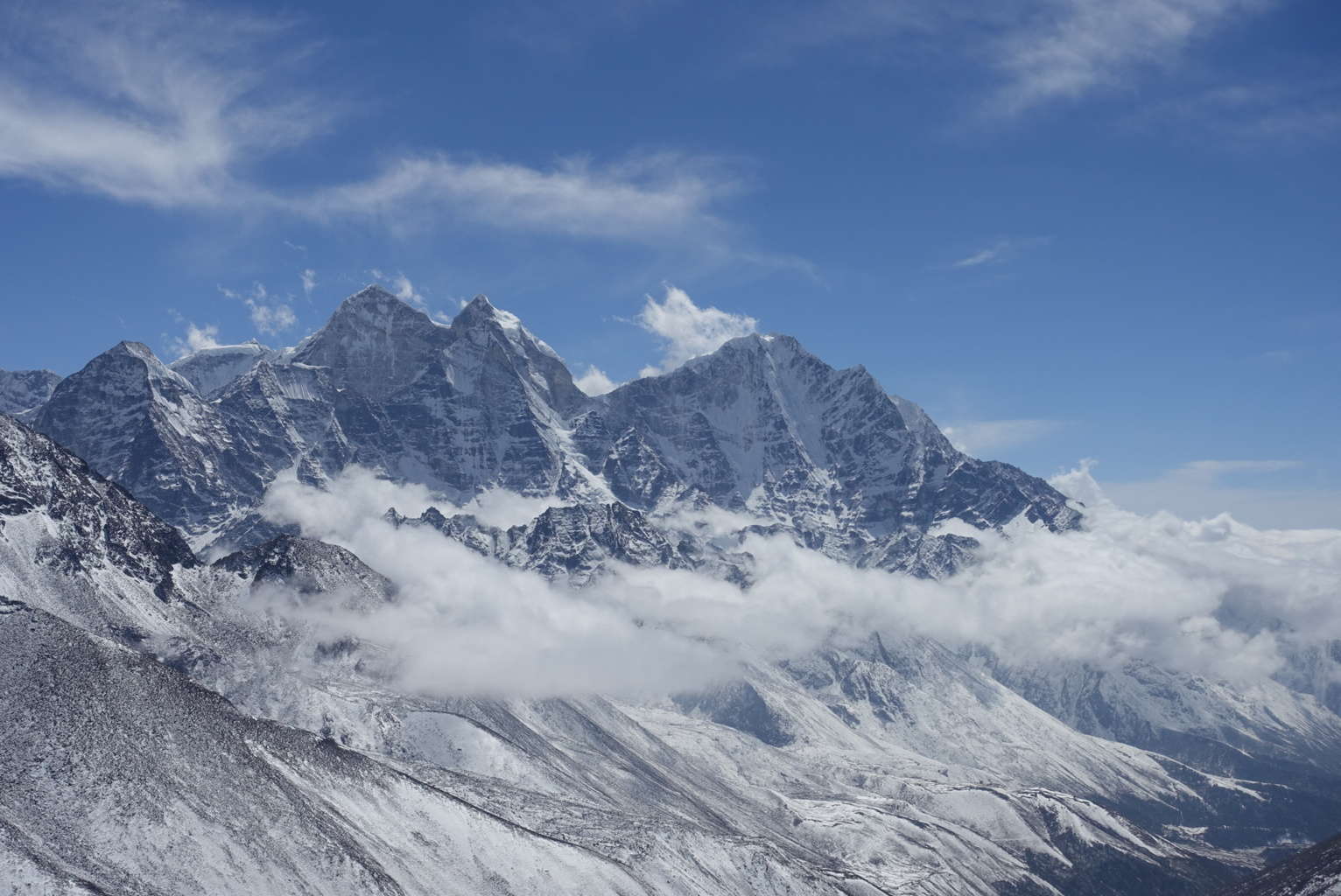
Comments
4 CommentsSuz
Apr 13, 2017Oh my goodness… So thankful that turned out okay for Kathy. What a frightening experience. Beautiful pictures for sure! Glad you made it safely out of the Himalyas! That extra “hill” you climbed had amazing views… Way to go Phil!
Phil Kieser
Apr 17, 2017Yes, there were a few scary days there during the trip, but it all eventually turned out well. We will never forget the landscape we trekked through. One of the most beautiful areas of the world we’ve traveled to!
Karen
Apr 13, 2017Ahhh Dengboche… where Phil took his first and only shower, where I felt crappy enough to nap in the midst of hammers and construction, to Lobuche and being told by Shiva to “ask the New Zealander” for medical advice for Kathy, and then of course our favorite lodge in Pheriche – where Kathy and I took our first and only showers! And all of us feeling human because its toilets actually flushed (except for those nightly hours when the temps froze the pipes) and because they had soap!! The memories…
Phil Kieser
Apr 17, 2017Haha, indeed some unique memories! So glad you were there to share them with us!!